![]()
As you all know, bees help us put food on the table. Their pollination of California almonds alone has been valued at a billion dollars. They have also become my favorite photographic subject. I wrote about this last September.
In this article, I’d like to present a portfolio of some newer bee photos and comments about the bees and the process of photographing them.
In September I wrote about shooting with my Sony a6400 APS-C camera. I’ve gradually transitioned to my Sony a7R IV full frame. Both cameras have very similar pixel density and produce similar final results. I typically crop about 1500 pixel wide images from the center of any frame, so the final edits are about equal for both formats. But I’ve come to prefer the full frame camera because finding is easier with the greater field of view for any given lens.
The a7R IV is the only full frame camera that matches APS-C pixel density, so given a choice between APS-C and any other full frame camera, I’d choose APS-C.
My favorite lenses are a Tamron 28-200mm f/2.8-5.6 Di III RXD on a 10mm extension tube and a Sigma 105mm f/2.8 DG DN ART Macro.
In September I was shooting at f/16 to f/22. I’ve since discovered that my camera autofocus works in different ways:
1. For f/11 and larger apertures, the lens opens for focus, then stops down for the exposure.
2. For smaller apertures than f/11, it focuses and exposes at the set aperture.
Method 1 delivers more sharp keepers than method 2. So now I shoot at f/11.
Another improvement in my technique is shutter speed. Using my standard aperture- preferred “mode A”, the fastest shutter speed with flash was 1/160 or 1/60. But I found that a simple way to speed the shutter is to set the camera mode to Manual and the shutter to 1/250. (I’ve tried faster than 1/250 with spotty results). I set the ISO to the lowest available (50), and the aperture, as mentioned above, is f11. This is about ten percent or less of the necessary exposure, so about 90% of the light is provided by the flash in TTL mode. The flash duration of 1/10,000s freezes most action except for the bee’s very fast wings.
But enough of technique, on to the portfolio.
Honey Bees
Western Honey Bees (often called European Honey Bees) live in large hives of more than 10K individuals. This hive is wild, and in an old pepper tree near my home.
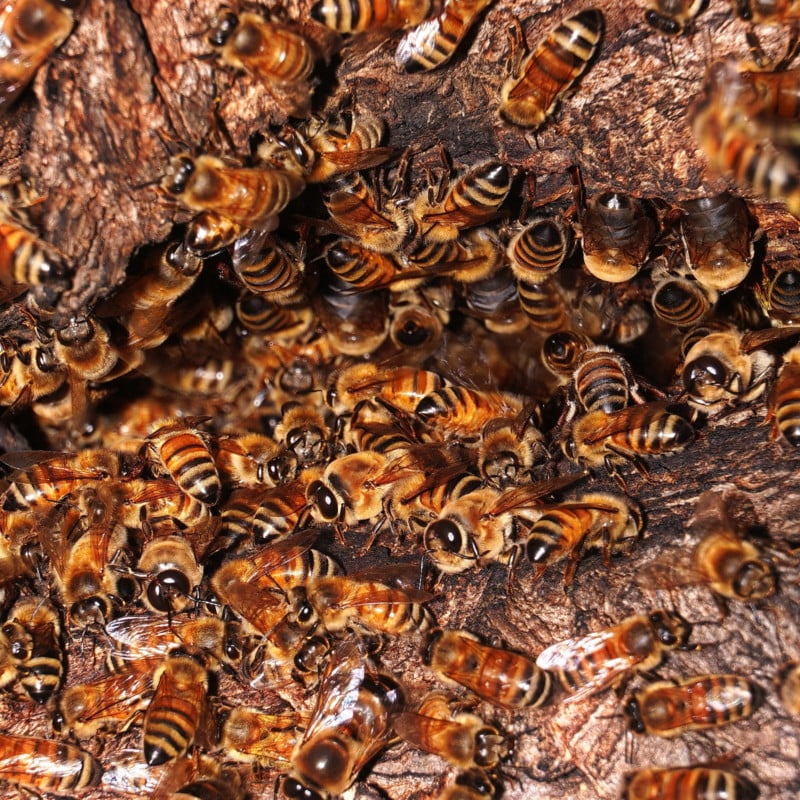
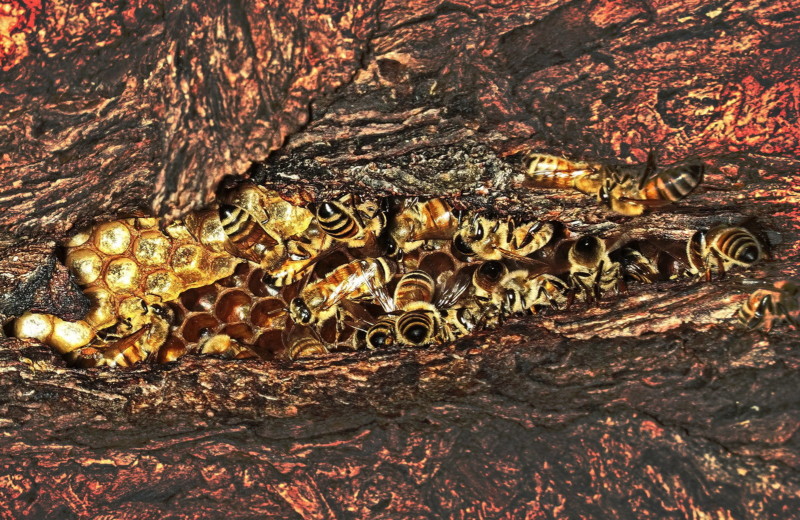
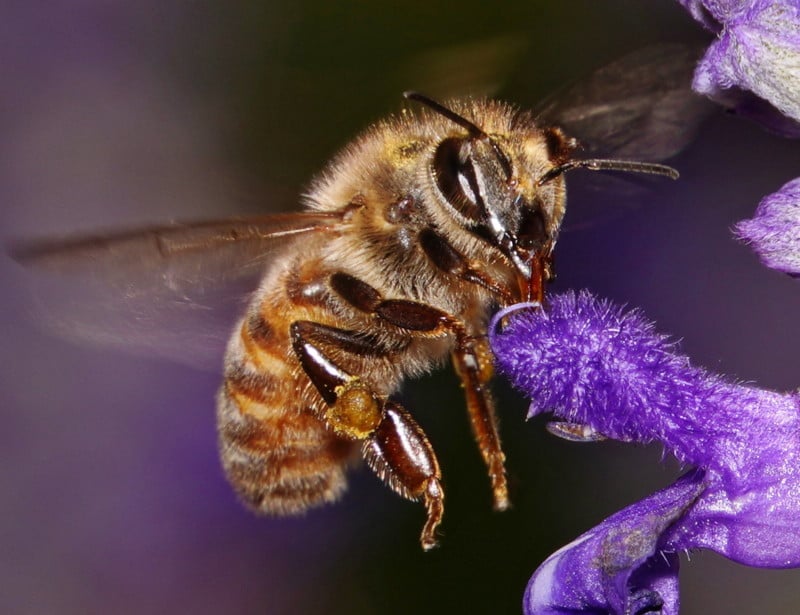
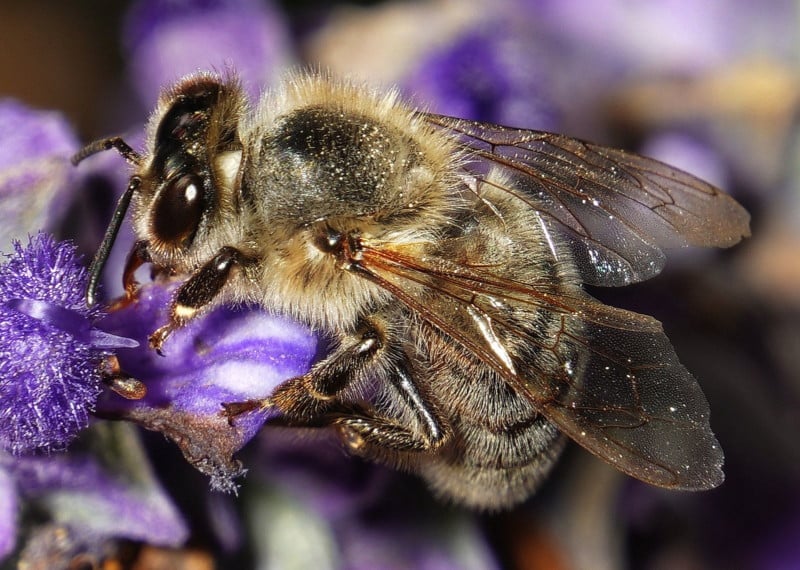
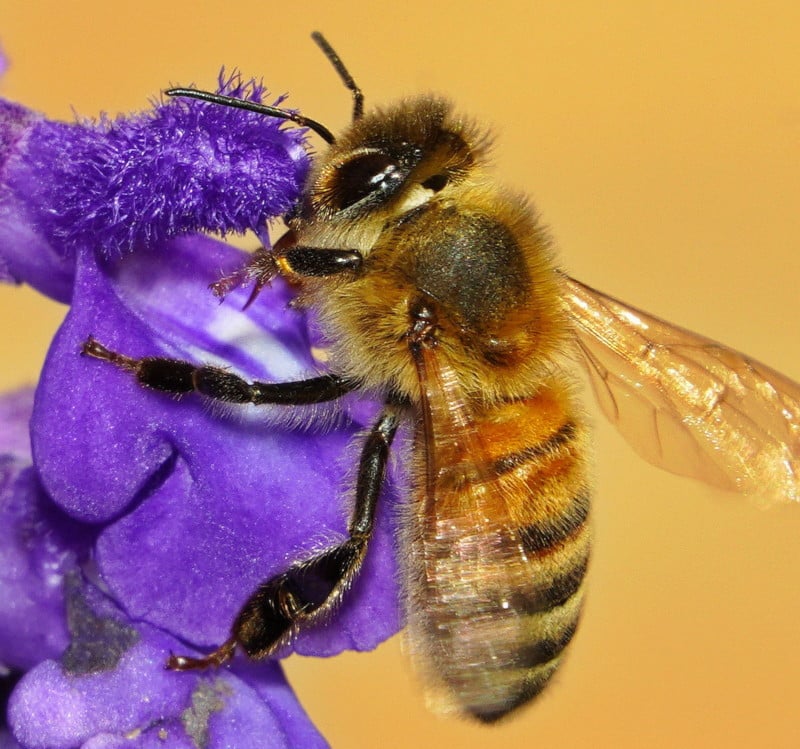
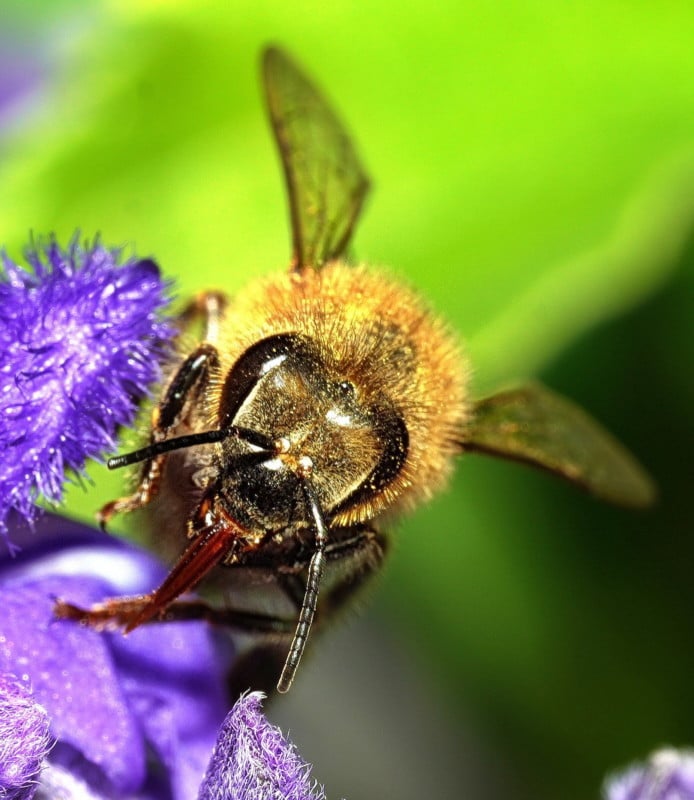
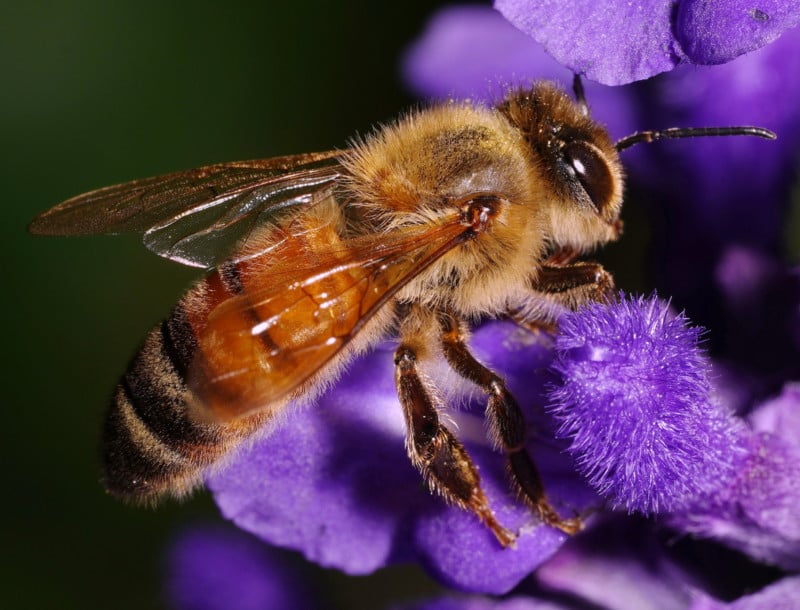
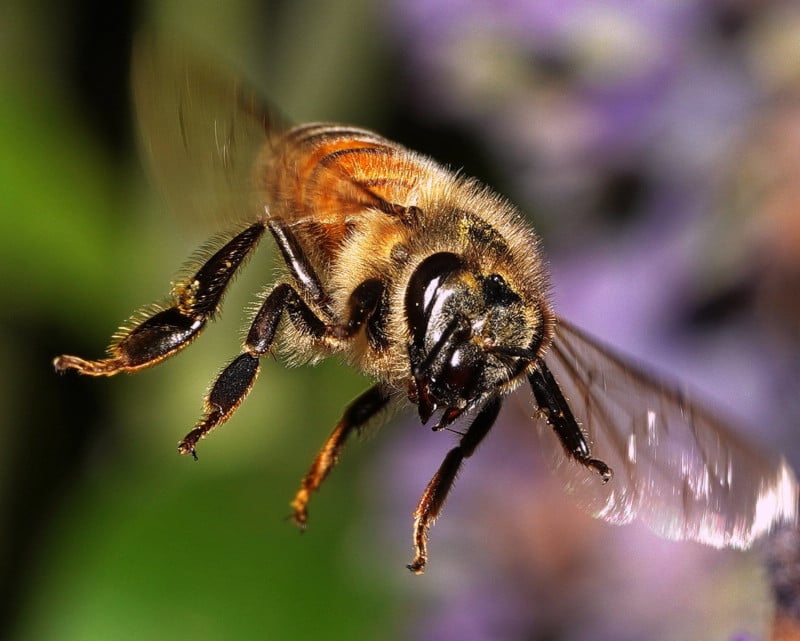
Wild Bees
Wild bees are important pollinators. Many live alone or in small groups. The larger bees are called bumblebees.
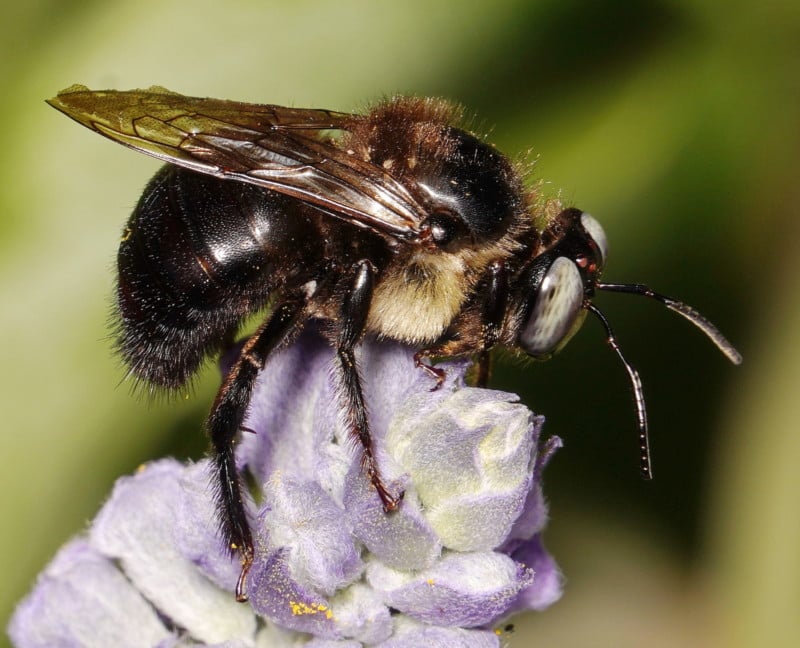
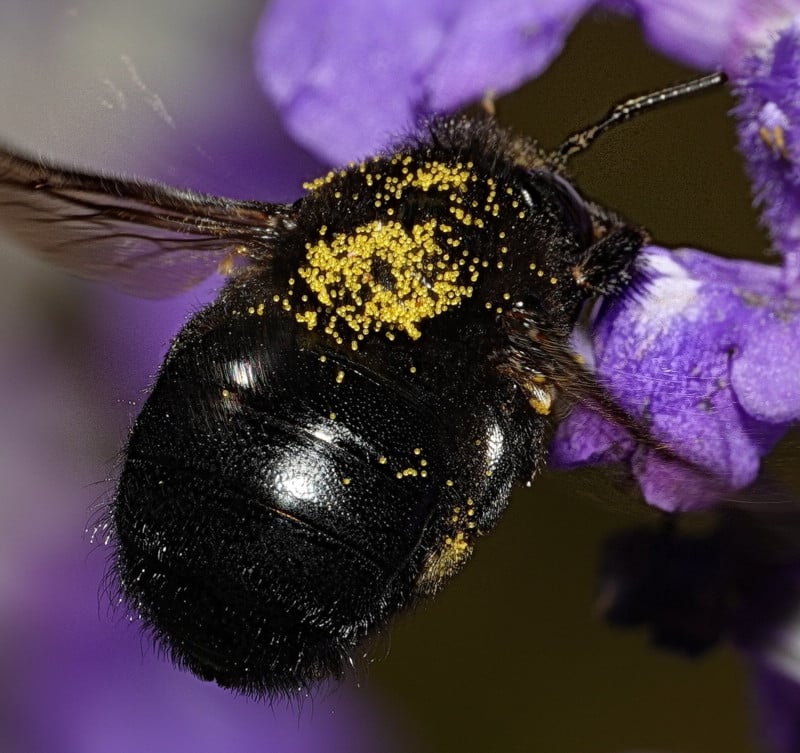
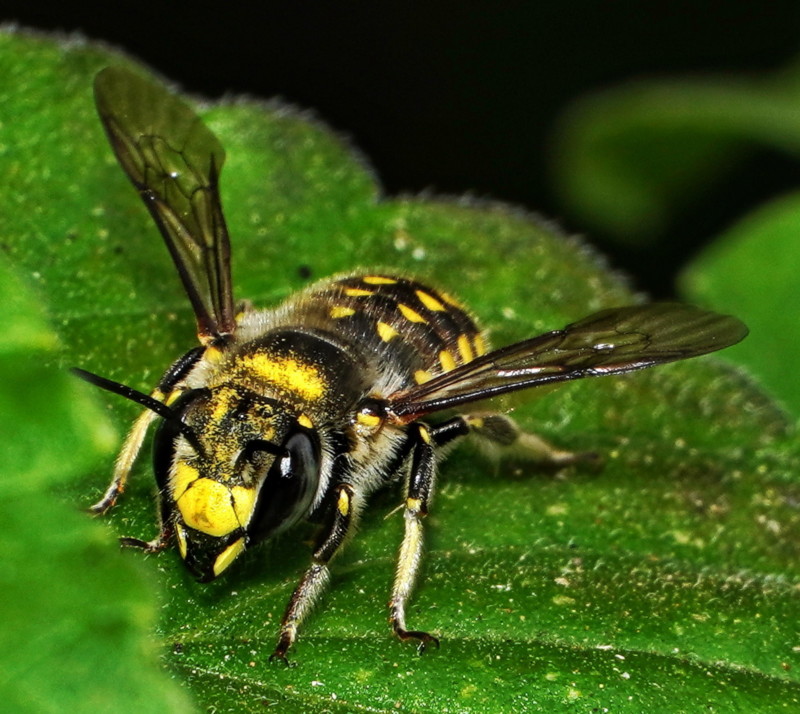
Wasps can be quite beautiful. I see them while photographing bees.
![]()
![]()
That’s all for now. I hope you’ve enjoyed viewing our insect friends. Please treat them well. They help our food to grow.
About the author: Alan Adler lives in Los Altos, California. He has been an avid photographer for 60 years. He is also a well-known inventor with about 40 patents. His best-known inventions are the Aerobie flying ring and the AeroPress coffee maker.







0 comments:
Post a Comment